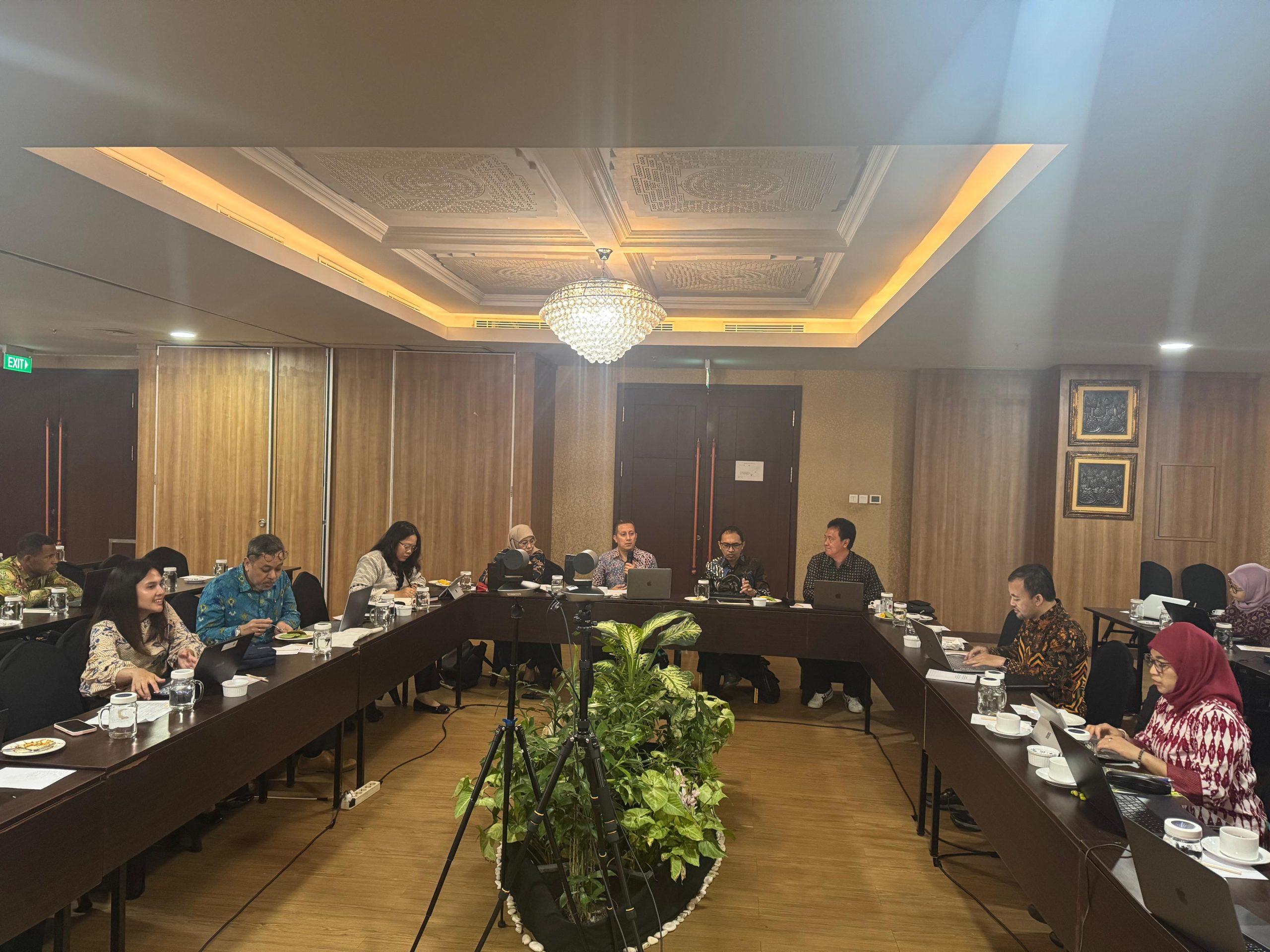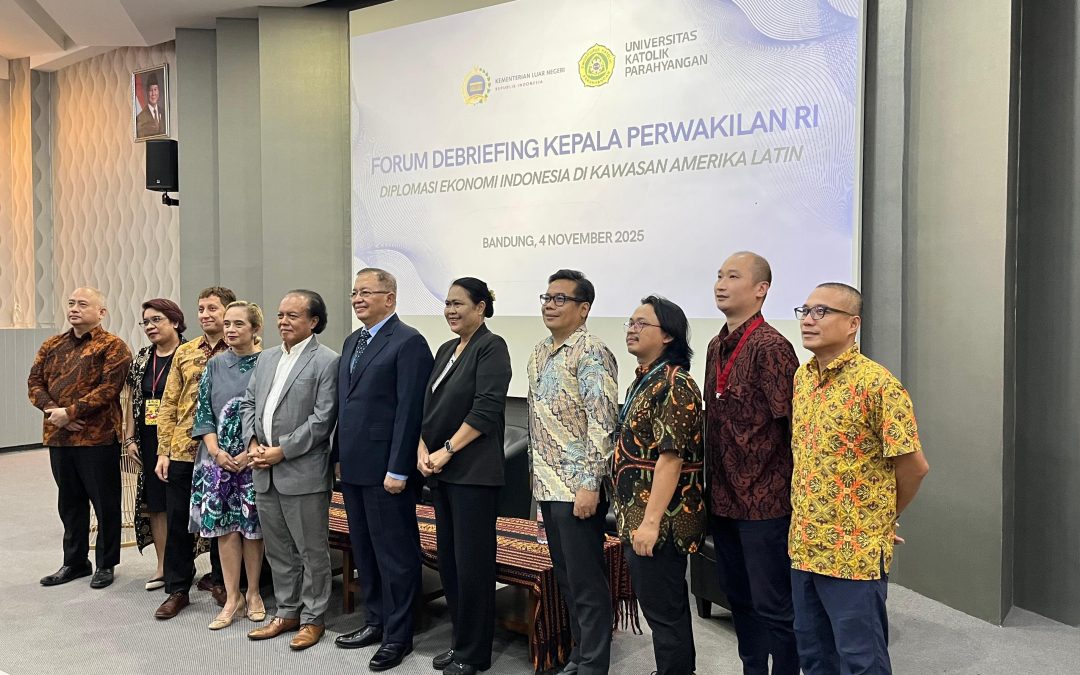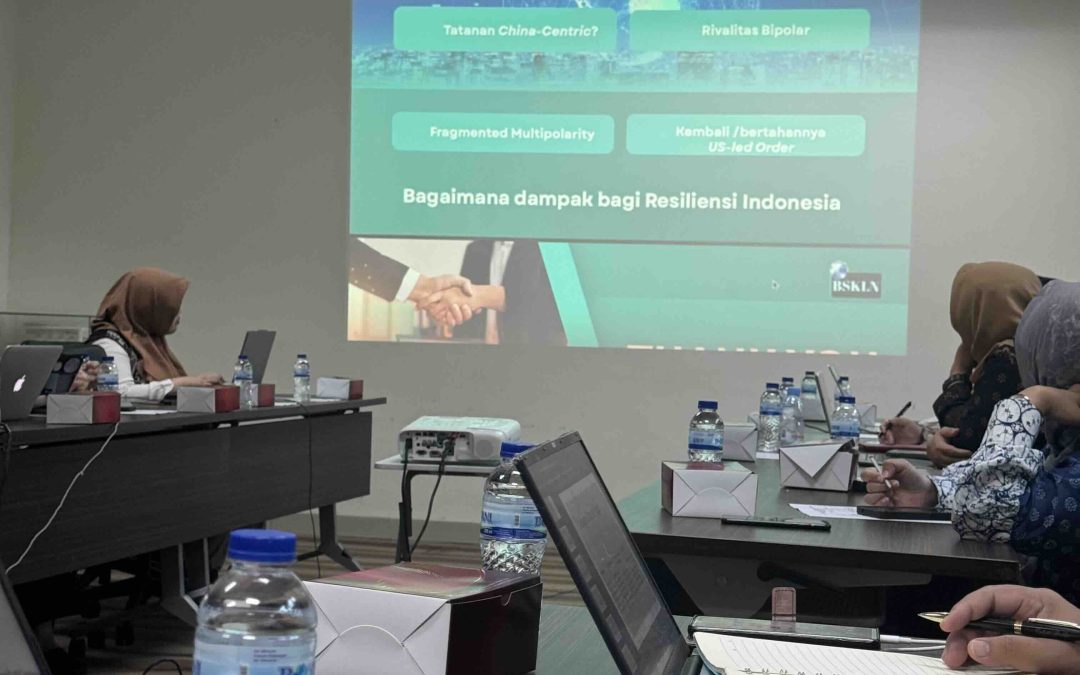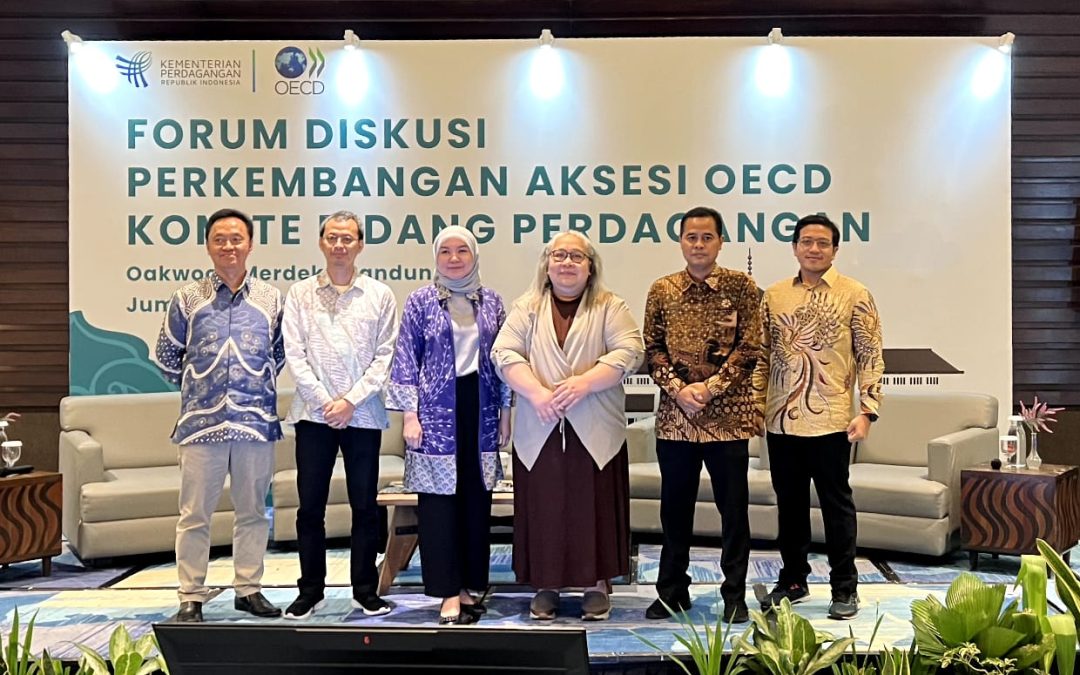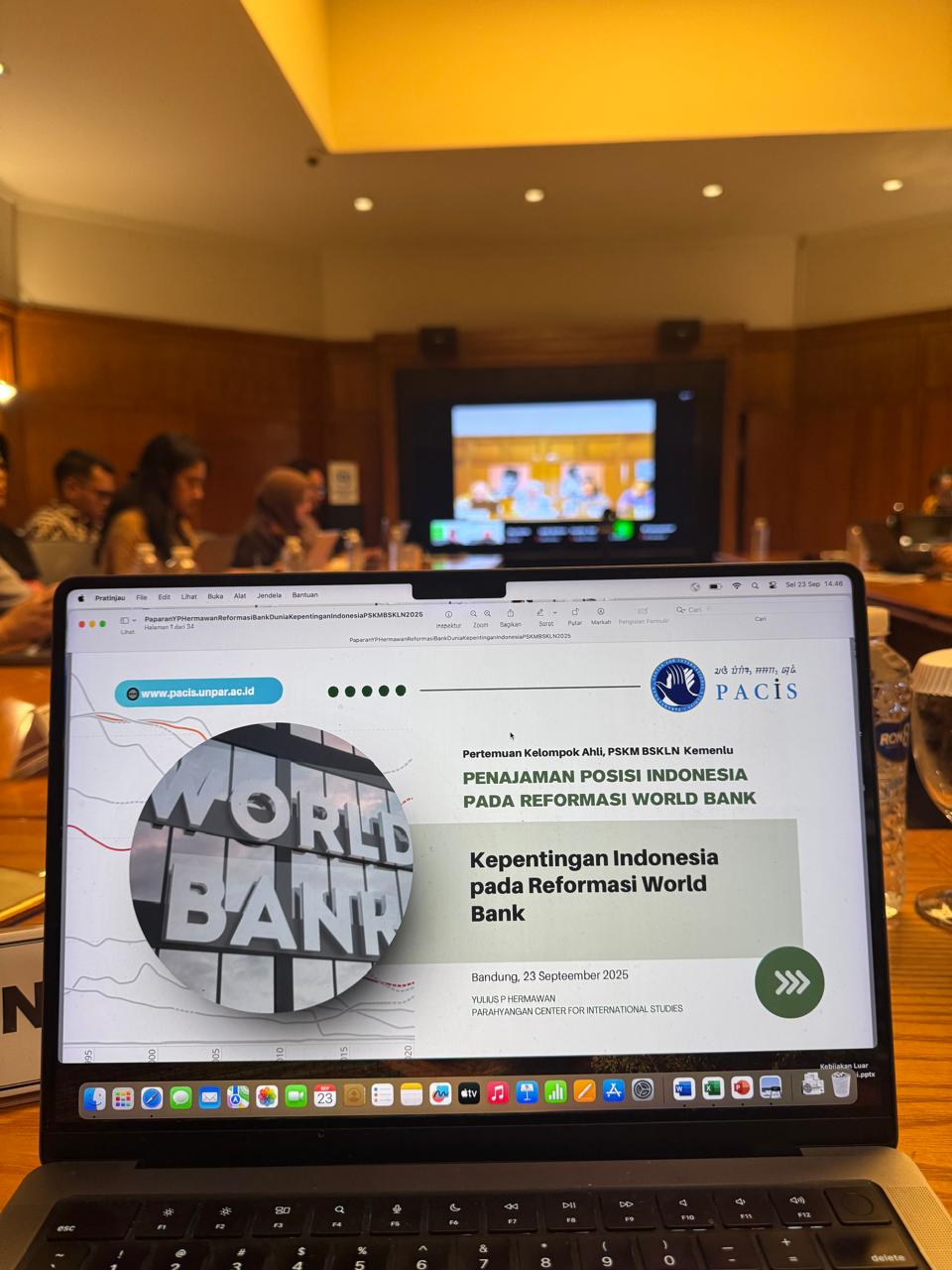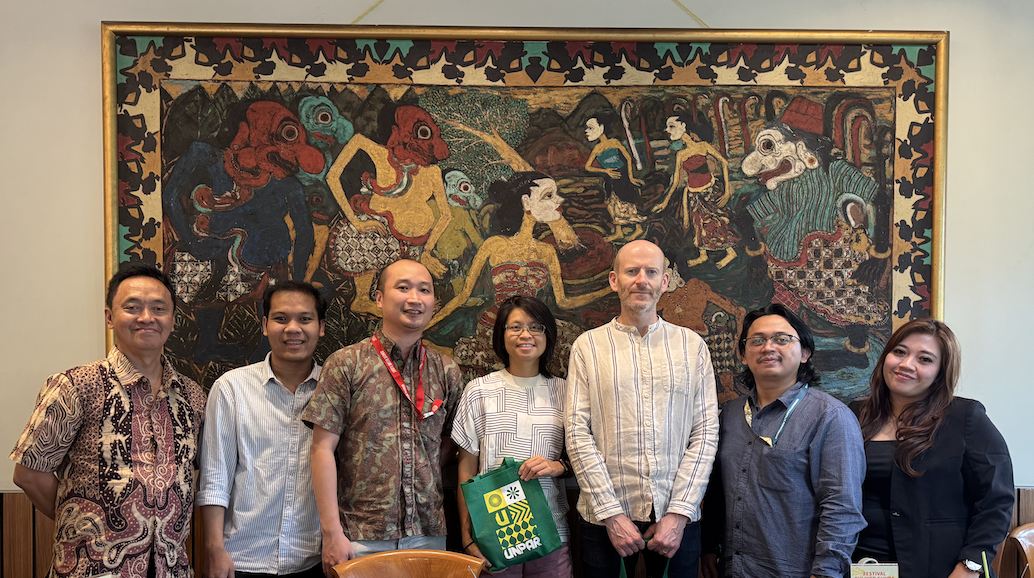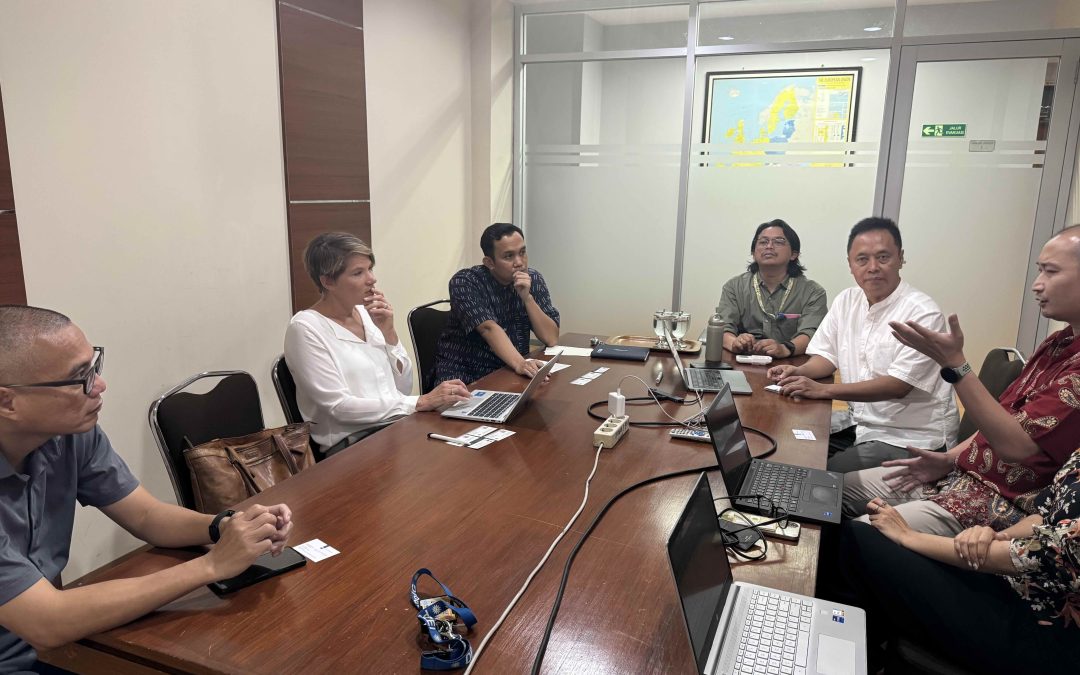The Chair of the Parahyangan Center for International Studies (PACIS) had the opportunity to provide input on the draft document Grand Design of Indonesia’s Policy Strategy in the Pacific/Pacific Elevation (GDSKPE) and the Roadmap for Strengthening Development Partnerships between Indonesia and the Pacific, during a discussion on the Harmonization of the Roadmap for Development Partnership Cooperation between Indonesia and the Pacific with the GDSKPE. The discussion was organized by the Directorate for Pacific and Oceania Affairs and the Center for Strategic Policy Studies on Asia-Pacific and Africa, Ministry of Foreign Affairs, on July 24, 2025, in Yogyakarta.
In his presentation, Yulius P. Hermawan, Chair of PACIS UNPAR, conveyed the results of the assessment of the draft Roadmap, GDSKPE, and the GDSKPE Companion Document. These two main documents are essential references in realizing the vision of Pacific Elevation, which was first presented by Indonesia’s Minister of Foreign Affairs, Retno Marsudi, at the Pacific Exposition in Auckland, New Zealand, on July 11–14, 2019. Their significance has grown further as a follow-up to the Bali Message presented by Indonesia at the Indonesia–Pacific Forum for Development (IPFD) held in Bali on December 7–8, 2022.
The GDSKPE outlines policy directions, strategies, strategic measures, and priority programs that have been formulated to realize the Pacific Elevation vision. It also delineates the collaboration schemes among various stakeholders for the implementation of these priority programs. The GDSKPE is intended to serve as a comprehensive guide for Indonesian stakeholders in their efforts to implement the Pacific Elevation vision.
The Roadmap, by contrast, provides more specific details as a follow-up to the agreements reached during the IPFD in Bali. It reflects various areas of Development Partnership Cooperation initiated by Indonesia to assist South Pacific countries in achieving shared prosperity, in line with the overarching theme of the IPFD.
The PACIS Chair emphasized the importance of ensuring that both documents are complementary. He noted that several action plans presented in the Roadmap are not yet included in the draft GDSKPE, and conversely, certain strategies, strategic actions, and priority programs contained in the GDSKPE need to be incorporated into the Roadmap, especially those that emphasize development cooperation grounded in partnership and aligned with the 2050 Strategy for the Blue Pacific Continent.
The 2050 Strategy for the Blue Pacific Continent, adopted by the Pacific Islands Forum (PIF) in July 2022, outlines a long-term vision that guides regional cooperation and development in the Pacific region. The strategy identifies seven thematic pillars: political leadership and regionalism, people-centered development, peace and security, resource and economic development, climate change, ocean and environmental stewardship, and technology and connectivity.
Sumber: https://forumsec.org/2050
Given the strategic relevance of this document for Pacific countries, the Indonesian government is encouraged to align its cooperation areas with those emphasized in the strategy. Such alignment reinforces the orientation of the GDSKPE and Roadmap toward addressing the priorities and interests of Pacific Island nations.
The discussion convened by the Ministry of Foreign Affairs reflects the Indonesian government’s growing commitment to deepening relations with South Pacific nations.
The Pacific region holds strategic importance for Indonesia, which regards it as the front yard of its eastern gateway. There are deep cultural affinities between the peoples of the South Pacific and Indonesia. Moreover, the South Pacific countries possess significant potential for strengthening bilateral and regional relations. Nevertheless, they also face pressing challenges, particularly climate change, which necessitate collaborative responses.
Despite its importance, the Pacific region has historically been underrepresented in Indonesia’s foreign policy. The Pacific Exposition held in Auckland marked a shift in this dynamic, signaling Indonesia’s intent to enhance relations with the island nations of the South Pacific. The inaugural Pacific Exposition took place in Auckland, New Zealand, on July 11–14, 2019. It was initiated by Indonesia in collaboration with the governments of New Zealand and Australia, aiming to strengthen cooperation in trade, tourism, and investment across South Pacific nations. The event brought together representatives from 20 countries.
The speech by the Indonesian Minister of Foreign Affairs during the Pacific Exposition marked a pivotal moment in the country’s foreign policy direction towards the South Pacific. In her speech, the Foreign Minister declared: “This is a new era of Pacific partnership—a ‘Pacific Elevation.’”
The convening of the IPFD in Bali was a strategic move to reaffirm Indonesia’s commitment to realizing the vision articulated during the Pacific Exposition. The Forum resulted in the adoption of the Bali Message on Development Cooperation in the Pacific, reflecting a mutual commitment by Indonesia and Pacific countries to enhance development partnerships. The Bali Message outlined a number of priority areas for cooperation and emphasized the importance of delivering tangible outcomes.
The Indonesian government has implemented various development cooperation programs across multiple sectors. These initiatives are executed by a range of ministries and institutions, and are supported by the Indonesian Development Cooperation Fund (LDKPI). This development cooperation has helped strengthen cultural ties between Indonesia and the Pacific nations and has improved Indonesia’s standing in the region.
In 2024, the Pacific Elevation Research Team of PACIS UNPAR collaborated with the International Relations Research Team from the University of Indonesia to support the Ministry of Foreign Affairs’ Asia-Pacific Policy Strategy Research Center in drafting the GDSKPE Companion Document. This document is intended to provide the general public with a better understanding of Indonesia’s policy strategy toward its neighboring countries in the South Pacific.
Written by: YP Hermawan

